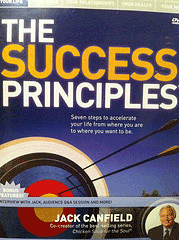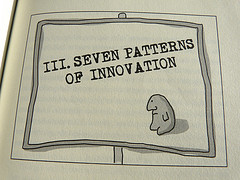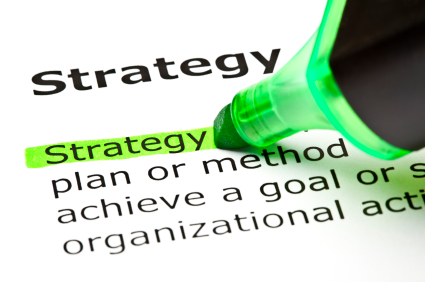Browse by Tag
- "Real" Innovation (2)
- Alignment (6)
- Business Innovation (9)
- Business Plan (2)
- Business Plans (1)
- Creativity (24)
- Critical Success Factors (4)
- Entrepreneurship (9)
- Global Competiveness (4)
- Human Side (11)
- India (1)
- Innovation (4)
- Innovation Consulting (18)
- Innovation Killers (3)
- Innovation Management (18)
- Innovation Tools (17)
- Innovation Training (24)
- Innovations (7)
- Inventions (16)
- IT Innovation (1)
- Leaders (5)
- Leadership (20)
- Leadership Development (13)
- Organizational Leadership (2)
- Organizational Strategy (20)
- Personal Values (6)
- Prediction (5)
- Strategic Innovation (38)
- strategic planning process (4)
- Strategy (3)
- Training (1)
- Vision (5)
- Weekly Dose (8)
Posts by Month
- 2014
- 2013
- 2012
- 2011
- 2010
- 2009
- 2008
- 2006
22 Principles of Innovation
Based on the last 25 years of working with local and global firms, The DeSai Group we has identified a22 Principles of Innovation. We have divided them into three categories: Organizational Success Principles, Individual and Team Success Principles and Leadership Success Principles.
When embraced, these principles create a significant difference when searching for innovations or venturing for new businesses. These principles are industry agnostic. Based on your industry, company culture, and business context, some may have more importance than others. They are all crucial in a great program design. You will need to uphold these as truths and make sure they take deep roots from day 1.

Organizational Success Principles
1. Seek innovation to alter or identify new business models. Due to the abundant number of convergences in products and industries, there is more white space today (in every sector) than ever before. Old business models are dying fast. Challenge your current business model, and perform acts of creative destruction. Work from the future back.
2. Listen for 360-degree voices. Your customers and partners are communicating their unmet needs faster and through a variety of media. Learn to listen faster. The voice of the customer alone is no longer enough. You must empathize with customers and gain new insights for their emerging and unmet needs.
3. Develop an innovation charter that defines innovation for your business. Tell everyone why it is important and what is expected of each individual at all levels as behaviors of innovation. Allow everyone to see themselves in your innovation vision.
4. Focus on developing microclimates for innovation, not the culture of innovation. This means you must find ways to make teams innovative. As more teams become innovative, culture will take care of itself.
5. Integrate innovation behaviors into your human resources performance management process.
6. C-suite and senior leaders should role-model innovation behaviors expected of others.
7. Provide basic innovation education to as many people as possible, and provide extended training to help build intrapreneurs. A good target ratio is 1% to 2% (develop 50 intrapreneurs if you have 5,000 non-factory employees).
8. Focus on fast experiments. Develop 90-day experiment plans for ideas that come from teams across the organization. Some of these ideas will surely drive powerful outcomes for your customers.
9. Define stretch challenges with a vivid vision of a future that is believable. Bigger challenges bring the best innovators forward. Real intrapreneurs are those who need stretch challenges and the freedom to test their wacky ideas-that is their currency. Liberate them to fail fast and discover ways to serve your customers. Give them candid feedback and recognize them quickly, no matter what the outcome for an experiment or a pilot. When they produce results, reward them handsomely.
10. In the beginning, provide access to off-budget funds for those who can work on challenging problems and produce fresh new solutions for growth.
11. Manage the idea bank closely-the bigger the pipeline (quantity and quality), the better the future.
Individual and Team Success Principles
12. Promote cross-functional volunteerism. Research shows that the majority of your employees bring only a portion of themselves to work. This means there is unharvested organizational potential waiting to be leashed. Allow anyone to form cross-functional teams for their great ideas. Diversity of thought is the catalyst for ideas. What any one person sees is only apart of what needs to be seen.
13. Teach people how to make what is invisible visible. No one person can see the future as clearly as a team of intrapreneurs can. Humans can see only through a lens of their past experiences. This means they never see a full reality of a situation. This thought can be humbling and, at the same time, very energizing for your best talent.
14. Learn to ask new questions before generating new ideas. Most organizations are solving the wrong problems in today's fast-paced world.
15. Prototype fast-think design on day 1. Always promote action over analysis. Sitting in the corner office idealizing issues and solutions is less effective than two people role-playing the situation for new insights.
16. Diverge then converge. Then do it again. Then do it once more. Three cycles will improve the clarity of an idea as it moves along the innovation pipeline. The very best ideas will survive.
17. Greenhouse ideas. At the very early stages, ideas must be protected just like a seed has to be protected for a plant to grow. Never dismiss an idea. Put them all in a greenhouse and protect them so they don't get shot down. Keep playing with them. It might take a few weeks or months before they are ready to be shared.
Leadership Success Principles
18. Show everyone how to derisk the future. Taking no risk can lead to stagnation. Not taking enough risk can create commoditization and price wars. Taking just enough risk at the right time can lead to market differentiation; that is called derisking the future.
19. Create healthy discontent. Provide stretch challenges and demand breakthrough solutions-once in a while. Most work is incremental. Your best innovators get bored easily. Often they are most sought after for all incremental challenges. Manage their intellectual capital between easy and complex assignments. This will keep them engaged and at peak levels of performance.
20. Communicate how innovation decisions will be made. Create an environment of transparency for idea generation, evaluation protocol, funding and experimentation.
21. Implement a reward and recognition policy that encourages proper behaviors for all, especially middle management.
22. Exhibit personal passion for innovative thinking and creativity.
The Takeaway
Innovation is a large opportunity in all organizations. However, it requires persistence, a plan and engaged employees to succeed.
Your turn. Please comment below.
1. What other innovation principles would you add to the list?
2. Which category do you feel is more important than the other two categories?
3. Do you find these principles to be industry agnostic?
INNOVATION IN 37 TWEETS
Innovation is an often written about topic. Many books and articles have been created including one of our favorites Innovation Engine written by DeSai Group co-founder Jatin Desai. We are all pulled in many directions each day. We can find it hard to spend the time reading worthwhile articles and books. Therefore, in the age of Twitter we bring you Innovation in 37 Tweets. Innovation thoughts expressed in 140 characters or less.
QUESTIONS YOU SHOULD ASK YOURSELF
- Are you relying on performance engine (short-tem growth) or using innovation engine for long-term growth?
- Do you have a solid business sponsor for the game of innovation in your organization?
- How different is your business model and its value proposition in comparison to others in the marketplace?
- How much more top-line growth can you achieve out of your current business?
- Do your managers have the insight to define new problems before others do?
- Are you skipping the step of assessing organizational readiness for innovation?
- Innovation Readiness: business case, sustained sponsorship, culture/systems, financial resources and program management?
- Is your business strategy Pioneer, Fast Follower, Imitative, Dependent, Low-cost or Specialization?
- Does your Innovation Strategy communicate why, who, what, how and when?
- Do you have too many ideas, just enough ideas or too few ideas to innovate?

STATEMENTS YOU SHOULD CONSIDER
- Innovation is bringing heart into work.
- Nucleus of innovation is tapping into people's hearts.
- Innovators have a thirst for knowledge.
- Waiters wait, managers manage, innovators create value.
- A rhythm for growth - harvesting a cultural balance between performance (left brain) and exploration (right brain).
- Your Innovation Goal should be measurable, customer focused and capable of delivering value.
- Organizations must complement the operational performance mind-set with the innovation execution mind-set.
- To achieve sustainable growth companies must better integrate product innovation with process and service innovation.
- Evolve your mechanistic, bureaucratic and hierarchical practices model towards an innovation-driven executionmodel .
- New value creation - innovate to generate differentiated new value and profit.
- Once you are ready to play the game of innovation, you will need an Innovation Scorecard.
- Create a business case for innovation and supporting innovation strategy linked to business vision and goals.
- Build a pipeline of corporate innovators -- the key talent for future growth (intrapreneurs).
- The average life span of companies on the S&P 500 has shrunk from 75 years in 1930s to just 15 years in 2000s.
- Innovation can build continuous new S-Curves for your organization.
- Without engaged employees, sustainable innovation is not possible.
- Without continuous failure there is no continuous innovation or evolution.
- Most managers are very likely to mobilize an idea if they have 80% clarity about it.
- Innovation Intent is easier to identify if the senior team has already declared its strategic intent.
- Rampant commoditization and disorder suggests that old methods of diagnosing growth challenges have been wrong.
- Globalization and Automation are causing a shortened life span for products and services.
- Innovation, if done right, should be an input to strategic planning, not an outcome.
- Optimize your innovation engine on the innovation highway - alignment, insights and mobilization are key.
- To begin your innovation journey, leaders in your company must take time to develop the innovation strategy.
- Sustainable competitive advantage necessitates sustained new innovations.
- Build your Innovation Engine to accelerate exploitation of new business ideas worthy of pursuing.
- Build your Innovation Engine to improve employee attraction, engagement and retention.
The Takeaway
Regularly re-consider your beliefs about succeeding at the game of innovation by challenging yourself.
Over to you. Please comment below.
- What other tweet length questions should we ask about Innovation?
- What other tweet length statements should we challenge ourselves with on a regular basis?
- What is your best advice on Innovation in 140 characters or less?
Pioneer Innovation in Action - Consumer Products Case Study
Global Consumer Products Companies are faced with three choices on how to compete in the new products and services arena. They can be a Pioneer, Fast Follower or Imitative.
The Consumer Products industry is the fastest of all industries. Unlike Financial Services or BioPharma, the industry must innovate new products and services every six months. At the same time, it must respond to new business models driven by automation and globalization at the speed of light. The primary way to grow is through building Innovation Engine capabilities across the value chain.
Let's take a look at how an $18 Billion company with 18,000 employees, mostly in the US, evolved their Innovation Strategy.

Client Situation:
A global multi-billion dollar fast moving consumer goods (FMCG) company, had successfully instituted a "fast-follower" strategy. Growth had come through organic operations and few small acquisitions in existing categories in adjacent FMCG fields.
The leaders in the industry had refocused their efforts on competing through innovation, speeding up the rate of new product introductions. Retailers had emerged as the leaders of "fast following" strategy. The client wanted to transform into an innovation leader or Pioneer.
Four Phase Innovation Approach:
Innovation Diagnostics: The innovation assessment highlighted critical issues within the organization that needed to be addressed immediately.
Program Pilot: In Phase II, the capability building tools were created, tested and tailored to the company.
Full Implementation: In Phase III, the capability building was started in three different strategic business units, concurrent with creation of the wider implementation plan.
Enterprise Rollout: In Phase-IV, the Innovation Approach was embedded across all enterprise systems and expanded across supply chain and open innovation platforms.
Innovation Teams Receive Venture Board Approval
Business Strategy must inform Innovation Strategy. The Consumer Products Company established a Venture Board to vet the ideas and seed them with $10 million in capital.
The goal was to find breakthrough ideas throughout the enterprise. The Innovation Funnel was opened wide. Innovation Teams worked the ideas into business concepts. 25% of the business concepts were initially funded. The balance of the business concepts was placed in an Innovation Database for future company use.
Results Are The Measure of Innovation Success
How did applying the DeSai Body of Knowledge impact the company?
- DeSai helped the client develop a range of new high value ideas with historically high concept testing results.
- 5-7 year innovation roadmaps and pipelines in three strategic business units were created.
- To achieve the desired growth path, the client initiated relationships with potential innovation partners and gained new insights from external partners.
- Several innovation processes were instituted: idea generation and management, innovation teams and charters, and a high-level blueprint for building an innovation organization.
- The client witnessed a cultural change within the organization. Six highly motivated innovation teams were formed creating a range of success stories, and spontaneous adoption of the approach within the organization.
- The client has attributed a revenue increase of 12.5% directly from the new innovation venturing process.
- The pipeline of ideas being tested are expected to begin, at least, three new business ventures every year with a potential of $500 million in revenue within the first three years after launch.
The Takeaway
Fast moving industries need a developed Innovation Process that can continue to deliver new products, services and growth to the company.
Your Turn. Please comment below.
- Does your company employ a Pioneer, Fast Follower or Imitative strategy?
- How does your company vet and seed promising business concepts with funds?
- How full is your Innovation Funnel?
8 Innovation Culture Books Worth Reading
I have spent most of my career involved in the Innovation arena. For long-term sustainable and continuous growth, a company must build a climate and culture of innovation. The recommended books in this category covers topics such as the role of leaders, how to design organizational structures and inspire teams to reach for the very best solutions.

 Managing Innovation, Design and Creativity by Bettina Von Stamm
Managing Innovation, Design and Creativity by Bettina Von Stamm
Innovation is the major driving force in organizations today. With the rise of truly global markets and the intensifying competition for customers, employees and other critical resources, the ability to continuously develop successful innovative products, services, processes and strategies is essential. While creativity is the starting point for any kind of innovation, design is the process through which a creative idea or concept is translated into reality. Managing Innovation, Design and Creativity, 2nd Edition brings these three strands together in a discussion built around a collection of up-to-date case studies.
 Positive Turbulence: Developing Climates for Creativity, Innovation, and Renewal (J-B CCL (Center for Creative Leadership)) by Stanley S. Gryskiewicz)
Positive Turbulence: Developing Climates for Creativity, Innovation, and Renewal (J-B CCL (Center for Creative Leadership)) by Stanley S. Gryskiewicz)
Can your company manage even encourage turbulence in ways that actually strengthen its competitive stance? Absolutely. In this work, top organizational psychologist Stanley Gryskiewicz argues that challenges to the status quo can be catalysts for creativity, innovation, and renewal and shows leaders how they can keep their company on the competitive edge by embracing a process he calls Positive Turbulence. Developed through the author's work with many of the world's leading companies over the course of thirty years, Positive Turbulence delivers proven methods for creating an organization that continuously renews itself through the committed pursuit of new ideas, products, and processes.
 Closing the Innovation Gap: Reigniting the Spark of Creativity in a Global Economy by Judy Estrin
Closing the Innovation Gap: Reigniting the Spark of Creativity in a Global Economy by Judy Estrin
Named one of the "Best Books on Innovation, 2008" by BusinessWeek magazine
Does innovation come about by luck or hard work? Is it a flash of inspiration or the result of careful management? Are innovators born or taught? In Closing the Innovation Gap, Judith Estrin provides the answers to these and other questions critical to our future. A technology pioneer and business leader, Estrin describes what will be required to reignite the spark of innovation in business, education, and government ensuring our long-term success in the global economy.
Innovation does not occur in a vacuum. It grows from the interplay of three drivers of creative change research, development, and application. Estrin calls this dynamic the "Innovation Ecosystem," explaining how these communities work together to create sustainable innovation.
 The Elegant Solution: Toyota's Formula for Mastering Innovation by Matthew E. May and Kevin Roberts
The Elegant Solution: Toyota's Formula for Mastering Innovation by Matthew E. May and Kevin Roberts
One million. That's how many new ideas the Toyota organization receives from its employees every year. These ideas come from every level of the organization from the factory floors to the corporate suites. And organizations all over the world want to learn how they do it. Now Matthew May, Senior Advisor to the University of Toyota, reveals how any company can create an environment of every day innovation and achieve the elegant solutions found only on the far side of complexity. A tactical guide for team-based innovation, THE ELEGANT SOLUTION delivers the formula to the three principles and ten practices that drive business creativity. Innovation isn't just about technology it's about value, opportunity and impact. When a company embeds a real discipline around the pursuit of perfection, the sky is the limit. Dozens of case studies (from Toyota and other companies) illustrate the power and universality of these concepts; a unique 'clamshell strategy' prepares managers to ensure organizational success. At once a thought-shaper, a playmaker, and a taskmaster, THE ELEGANT SOLUTION is a practical field manual for everyone in corporate life.
 Swarm Creativity: Competitive Advantage through Collaborative Innovation Networks by Peter A. Gloor
Swarm Creativity: Competitive Advantage through Collaborative Innovation Networks by Peter A. Gloor
Swarm Creativity introduces a powerful new concept-Collaborative Innovation Networks, or COINs. Its aim is to make the concept of COINs as ubiquitous among business managers as any methodology to enhance quality and competitive advantage. The difference though is that COINs are nothing like other methodologies. A COIN is a cyber-team of self-motivated people with a collective vision, enabled by technology to collaborate in achieving a common goal n innovation-by sharing ideas, information, and work. It is no exaggeration to state that COINs are the most productive engines of innovation ever. COINs have been around for hundreds of years. Many of us have already been a part of one without knowing it. What makes COINs so relevant today, though is that the concept has reached its tipping point-thanks to the Internet and the World Wide Web. This book explores why COINS are so important to business success in the new century. It explains the traits that characterize COIN members and COIN behavior. It makes the case for why businesses ought to be rushing to uncover their COINs and nurture them, and provides tools for building organizations that are more creative, productive and efficient by applying principles of creative collaboration, knowledge sharing and social networking. Through real-life examples in several business sectors, the book shows how to leverage COINs to develop successful products in R & D, grow better customer relationships, establish better project management, and build higher-performing teams. In short, this book answers four key questions: Why are COINs better at innovation? What are the key elements of COINs? Who are the people that participate in COINs and how do they become members? And how does an organization transform itself into a Collaborative Innovation Network?
 Leadership for Innovation: How to Organize Team Creativity and Harvest Ideas by John Eric Adair
Leadership for Innovation: How to Organize Team Creativity and Harvest Ideas by John Eric Adair
New ideas and new ways of doing things are one of the main ingredients in sustained business success, but how does one create the right conditions for innovation?
Leadership for Innovation will help readers create an innovative climate that encourages the development of new products and services. Drawing upon real-life examples including Google, Honda and 3M, John Adair sets out practical ways for bringing about change in organizations. As well as identifying the characteristics of an innovative organization, he discusses key topics such as organizing for team creativity; motivating creative people, how to build on ideas and how to be a creative leader and team member.
Leadership for Innovation shows how to inspire teams to go one step further and generate the kind of ideas that are the foundations of future success.
 The Leader's Guide to Lateral Thinking Skills: Unlocking the Creativity and Innovation in You and Your Team by Paul Sloane
The Leader's Guide to Lateral Thinking Skills: Unlocking the Creativity and Innovation in You and Your Team by Paul Sloane
In this lively, energetic guide to leadership, highly acclaimed author, trainer and presenter Paul Sloane shares dynamic techniques that are sure to unleash creative energy and lateral thinking. Packed with real-life examples, practical methods and lateral thinking exercises, the book encourages you to question your assumptions and develop new ideas with a variety of techniques. Lateral thinking puzzles at the end of each chapter illustrate the importance of thinking outside the box.
 Giant Steps in Management: Innovations that change the way you work by Julian
Giant Steps in Management: Innovations that change the way you work by Julian
Birkinshaw and Michael J. Mol
Succinctly but completely describing 50 of the most important management innovations in the past 150 years, Mol and Birkinshaw educate us on where and how managerial innovations arise. An amazing overview of the management practice landscape, Giant Steps in Management provides invaluable insights for organizations seeking better performance. Jeffrey Pfeffer, Professor, Graduate School of Business, Stanford University Never has it been more important for managers to innovate the way they manage. As this book so powerfully shows management innovation advances in how we manage is a secret weapon in the search for competitive advantage. With a fantastic compendium of the 50 most crucial management innovations this book will surprise, inform and inspire any manager who believes that they need to innovate the way they manage. Lynda Gratton, Professor of Management Practice, London Business School Author of Hot Spots; why some teams, workplaces and organisations buzz with energy and other's don't. "This book might be called 'Everything you wanted to know about management, but were afraid to ask'. It's an invaluable quick guide to the entire arsenal of techniques and models, and I recommend it to anyone who takes the job of management seriously. It is typical of the authors work, in that it is clear, crisp, and useful." Tim Brooks, Managing Director, Guardian News & Media Limited INNOVATION IS AT THE HEART OF GREAT MANAGEMENT How do you manage? What skills, ideas, tools and techniques do you use? Have you always used them? Think about it: how we manage organizations and ourselves is in a constant state of evolution. Nothing about the way you work today is forever. Managers are always trying new things, different approaches. There are management innovations underway all the time in large organizations. Many fail. Some work. A few make history. The most valuable ones are picked up and absorbed across entire industries and countries. These are the ones this book will tell you about. Giant Steps in Management presents a thought provoking selection of the 50 most important management innovations of the last 150 years and describes the impact they have on management today. Some of the innovations will be familiar to you; others will be new, different, surprising. Together, they form a fascinating compendium of the ideas, techniques and practices that have rocked the world of management. If you want to be on the right side of innovation, keep this book to hand.
The Takeaway
Growing your climate and culture or innovation can be jumpstarted by reading the books featured above. The authors explore and outline many of the areas necessary to succeed.
Your turn. Tell me what you think. Please comment below.
- What other books would you recommend be included on the list?
- What is your favorite book on the topic of Innovation Culture?
- Who is your favorite Innovation writer?
Should Higher Education Be Free? - An Extreme Innovation Challenge
 On September 5, 2013, Professor Vijay Govindarajan and I co-authored a blog about Higher Education for Harvard Business Review Blog website. To our surprise, it became one of the most popular blog ever. It reached over 225 comments in matter of few days.
On September 5, 2013, Professor Vijay Govindarajan and I co-authored a blog about Higher Education for Harvard Business Review Blog website. To our surprise, it became one of the most popular blog ever. It reached over 225 comments in matter of few days.
Obviously we struck a nerve. Why?
In the article, we suggested that the time has come for new business innovation models to fix the higher education system here in the US and across the globe. Here is the beginning of it:
-----------------------------
In the United States, our higher education system is broken. since 1980, we've seen a 400% increase in the cost of higher education, after adjustment for inflation -- a higher cost escalation than any other industry, even health care. We have recently passed the trillion dollar mark in student loan debt in the United States.
Read the entire article at Harvard Business Review >>>
Moving Forward in a Changing World
Today's modern leaders need to be prepared to guide their organization's innovation efforts. In this global economy, how to begin and how to structure are big questions. How exactly does one assess innovation readiness and what qualities, values and competencies will drive future success?
Competing on price alone in the long and even short run, is a losing strategy. Today, there are no safe-haven sectors, every industry is being re-shaped, and new competitive advantages average three months. Macro trends of globalization and automation continually shorten life span for products and services. Nimbleness is lacking, strategic and annual processes are not working, and multigenerational talent gaps are widening. (chapter 2, Assess Innovation Readiness, Innovation Engine)

The disruptive result is the shift of power from the board room to the marketplace. Many authors and experts have pointed out this trend, yet traditional business models in the main, have not yet adjusted. Spend Shift describes a post-recession values-driven economy, concluding that consumer expectations and behaviors will drive business decisions.
John Gerzema and Michael D'Antonio's latest book, The Athena Doctrine: How Women (and the Men Who Think Like Them) Will Rule the Future, may give us some important insight into the skills, values and competencies of an ideal world leader, as identified through a two year study involving 64,000 people in 13 countries that comprise two-thirds of global GDP. It comes down it seems, to an array of desirable skills related to an emerging form of leadership arising in the business world - skills, traits, values and competencies thought of by the majority surveyed, as feminine traits.
While 81% said both masculine and feminine traits are needed to thrive in this world, the survey strongly revealed that both women and men are frustrated with the traditional masculine conduct and business structures they believe to be responsible for the financial global crisis. Globally, the feeling is one of cynicism overall, distrust particularly in financial institutions, and an overwhelming opinion (86%) that organizations have accumulated too much power. The world is more social, global, and interdependent. While traditional practices in business, education, and government are increasingly ineffective in today's emerging global community and markets, we are seeing successful, new approaches to business as "millennials" enter the workforce with values that are challenging and changing the status quo.
In the August 7, 2013, article/video entitled Athena in Pinstripes, John Gerzema makes two glaring points:
- There are still a very small percentage of women in the board room, yet women influence 80% of purchases
- A public company today focuses on shareholder value. The company of tomorrow will focus on employee value and community value, recognizing who actually creates value within an organization.
As John Gerzema reminds us, Peter Drucker once said, "The Only Purpose of Business is to Have a Customer."
Getting back to assessing and planning, in Innovation Engine: Driving Execution for Breakthrough Results, Jatin Desai, in Chapter 2, "Assess Innovation Readiness," states that, "Innovation, if done right, should be an input to strategic planning, not an outcome." Building a supportive climate and culture of innovation requires an evaluation of not only a firm's offerings, but also the intent, knowledge, quality and ethics of a company and the skill set and values of its leaders. The overall theme really needs to be one of engagement.
Innovation Engine addresses how to assess innovation readiness, the factors that must be examined, the questions that need to be answered, how to develop the competency for deep insights, the roles of external environment and internal employee engagement, and the overall alignment of success factors.
Unfortunately, "In most companies, future-related decisions are based primarily on use of historical data. Hardly anyone brings explicit data about the emerging needs of current customers or defines new opportunities for evaluation … in most cases, the process lacks the collective wisdom and knowledge of the entire organization at large. … it is assumed that the top team, albeit most distant from the front line, has the required knowledge about the ever-changing products, technologies, and issues. This is an orthodoxy that is rarely, if ever, challenged." ( Innovation Engine, Chapter 2, p. 39).
Past methods do not guarantee future success. The role of transformative leadership is crucial, as it sets the tone, dialogue and pace of an organization's strategy and execution. If dominant logic is stifling, a learning culture does not exist, or a firm's access and commitment to technologies and resources are lacking, ultimately innovation will not likely succeed. Regardless of how brilliant an idea may be, or how aggressive leadership and management, if the organization is out of step with the markets, trends, desires and values of its potential customers, there is no business.
The success of future leaders is not "men versus women" despite Athena's survey results of 66% of those agreeing the world would benefit if men thought more like women. Feminine qualities like collaboration, Intuition, patience, flexibility and loyalty were ranked high as key leadership qualities. So were masculine qualities such as decisiveness and resilience, along with neutral qualities including intelligence, candor and vision. It seems the message to CEO's from Athena and Innovation Engine is, from the beginning of the innovation process:
- be a better listener, be inclusive embracing diverse mindsets and points of view
- strive to continuously engage your customers, employees and communities
Innovation Engine puts forth a solid methodology for assessing, aligning, mobilizing and leading innovation which is comprehensive and inclusive from the start, emphasizing the importance of developing an innovation framework, organizational structure and momentum that begins, plays and continues with people, including and accommodating all stakeholders. This is the new direction of the world, and thus, everything in it.
The future is upon us. Meet it with an open mind.
" Bon chance mes amis."
Creating the Purple Thing that Makes Trillions
Consider the following:
- The other day in a LinkedIn discussion on creativity as a precursor to innovation, someone commented that every discussion on creativity seems to devolve into personal or pet theories on the subject.
- A recent email with some insights from the HR Management Institute's conference on "Enhancing HR as a Strategic and Transformative Business Partner in Times of Volatility and Change," admonished: "If you're not authentically engaged in the competition for talent already, there's little time to waste. Nearly three million employees voluntarily left their employer in January, the highest level since June, 2008." One conference speaker followed up with a blog on "The Top 5 signs You're already Losing the Talent War"
- FEI posits that if you attend FEI US, you will, "Walk away with the answers and motivation to lead your organization into the next 10 years." The top 3 bullet points:
- Creativity under pressure
- Finding your next trillion dollar opportunity
- Creating an environment that breeds innovation

What this means:
- There is agreement that creativity is integral to innovation but disagreement on what it is and how to keep it flowing.
- If top management has not yet removed the barriers within your organization that stifle the flow of creativity and innovation, has neglected to create a viable and sustainable culture and climate in alignment with your vision, and still needs parameters in place to find good people and sustain relationships, you are backpedaling on the back roads in the state of outdated paradigms.
- In this exponentially changing business climate, the pressure to get ahead is weighing many organizations down, while the pressure to be sustainably edgy but relevant in finding the next innovative wave puts HR, R & D, and top management in far too many meetings. How innovative is your oganization?
Getting back to creativity as the agreed upon source of innovation, would it be beneficial to take a look beyond the structure, policies, vision and existence of the organization itself? Do culture and climate for innovation support have a tough road due not only to entrenched outdated evaluation, training, and leadership models, but perhaps also factors deeper in the societal fabric?

Why is creativity elusive and the creative process so hard to define? Consider this real life scenario.
The Artist. Eschewed a guaranteed-in to Harvard Medical School in the 1960's, left Duke University behind in 3 rd year to earn a degree in American Economic History attending night school at Long Island University; then thanking them for the offer to teach, became a graphic artist to earn a living after welding sculpture after-hours at an industrial job and using old tempura to create a first painting at 26. Has donated his time over the years helping kids find art expression with drawing and sculpting with found objects. His family was stunned by his decisions. He became an artist full time at 50. When asked the question, "What do you think is the biggest obstacle to encouraging creativity?" he replied: " Hardened arteries. Society, education, and business put rules and clamps on intuitive processes. Most art education is not art, is not creative, and at worst is manipulative. The regimentation seen in business begins in the schools. Artists do survive in spite of the schools and industrial environment, but not without emotional and psychological cost. We reward manipulation, not creativity."
All of us innately have a degree of creativity regardless of how or why, and the act of creating fulfills something in us that nothing else can. The real question may be why do we seemingly lose the ability to access it, or are reluctant to acknowledge and use it? Most likely the answer is lack of opportunity, practice and support. We're much too busy actively doing things society/business tells us we should do to be a success in life. As a result, not only do we personally not have time for creative pursuits or feel guilty when we do take the time, but for most of us our jobs and careers do not reward activity that is outside of the accepted norm, and daydreaming is a big no-no, as there is not an accepted cost center code for that activity. As a result, when we are asked to be creative or desire to be, we need to relearn and remember what it is.
How do you find Innovation: 11 Practical Ideas by Jatin Desai
Start Fooling Around - A Business Guide to Innovation
How are Innovation, Creativity, Engagement, Personal and Human Values linked?
Two quotes to enjoy:
"Imagination is more important than knowledge. I never came upon my discoveries through the process of rational thinking." ~ Albert Einstein
"When I was 5 years old, my mother always told me that happiness was the key to life. When I went to school, they asked me what I wanted to be when I grew up. I wrote down 'happy'. They told me I didn't understand the assignment, and I told them they didn't understand life." ~ John Lennon
Institutionalizing Entrepreneurial Curiosity: Think Small and Fast
Many world-class companies have designed their business innovation engine to be small, nimble, and fast just like a start-up.

Following are specific examples of how world-class organizations support their innovation engines in order to enable a higher success hit rate from their innovation teams and "intrapreneurs":
- IBM has become the world's technology leader because of their commitment to innovation through collaboration. Their innovation philosophy is "Fail Many, but Fail Cheap". They use "Single Portal" (one of world's Top 10 intranets), Innovation Incubator (Technology Adoption Process), Lotus Connections (for fast information sharing), Innovation Jams (worldwide online ideation sessions), BluePedia (one of the largest internal Wikipedia sites), and Sametime (for instant online meetings).
- Whirlpool has an innovation college-like program that creates innovation mentors who are trained in structured innovation tools. These mentors are the primary innovation consultants for business teams to achieve their respective execution strategies.
- Intuit conducts multi-day "lean start-ins" for trained intrapreneurs to teach them how to conduct rapid experimentation for their products and services.
- Kimberly-Clark conducts "expert acceleration sessions" where they bring in external thought leaders (domain experts, industry analysts, scientist, leading edge technologists) face to face with business teams to help identify game-changing opportunities.
- 3M mandates internal sharing of all new innovations across product lines, markets, and R&D centers. They also have 30 customer technical centers across the world designed to better understand unique market needs and to accelerate global product introductions.
These big companies are successful because they understand how to grow big, with a Silicon Valley mindset. They have nurtured small start-up environments within their larger organizational structure and in the process have embraced how to continually experiment with what might be 'next'. Most importantly, they have realized they can never survive by primarily relying on knowledge and expertise solely within the four walls of the company.
In other words, they deliberately pursue outside-in (looking for emerging needs of the customers and markets) and inside-in (collaboration across internal business areas) perspectives as a standard practice.
How are you incubating and institutionalizing "entrepreneurial curiosity" within your organization?
Learn more about developing entrepreneurial thinking via our Venture Competitions article. When properly deployed, the business plan competition concept can result in 1) generation of new products and services, 2) development of employee business acumen and entrepreneurial capability, and 3) improved internal networks, enhancing cross-company collaboration and business results.
Strategic Planning: Aligning Vision and Purpose
You know you want to innovate. You know you need to innovate. How does a business engage in business innovation; assess need, corral idea generation and move forward with perspective into a strategic planning process?

Innovation can move your business into a plan for sustainable growth. But, with every business sector experiencing transformation and re-shaping, many businesses are no longer able to adopt or move forward with a single sector strategy. Studies show the average cost of bringing new products to market has doubled in the past decade. Add to that, failure rates of 60% to 80%, and the folly of engaging in innovation without a strategy becomes a stark reality.
With a minority of new products realizing any significant profit and an average competitive edge of about three months, realizing growth through product development alone is unlikely to bring desired sustainable growth.
Businesses are realizing they must develop a multi-dimensional approach; linking their products, customer service and the processes of creation and delivery. They need to engage in a total evaluation and an ongoing strategic planning process to realize any level of sustainable growth.
There are many definitions of innovation. At DeSai, our working definition of innovation is:
"Harvesting the deep insights of an organization's human spirit and knowledge, generating a pipeline of ideas that are evaluated, selected and ventured using disciplined tools, and methods and processes that advance growth objectives for an organization."
Every business is aware of the need to re-invent, re-position, re-package, R & D, the importance of market awareness, constant market evaluation and so on. Some companies clearly have more success with innovation than others. The question of how best to innovate must yield an answer that aligns with your existing structure.
For example, some companies that build on a core competency can realize consistent gains as they move across categories. Honda, for instance, manufactures engines. Automobiles come to mind. Honda produces engines for many markets, including cars, lawn mowers, marine engines, generators, airplanes, motorcycles, and more. Honda's strategic planning process has resulted in broader markets, all with unique characteristics, though based on engine manufacturing. It works for Honda, although it may not work for you.
While CEO's and executive leaders understand the nature of innovation itself and most agree the goal of successful innovation is the transformation of their vision and strategy into profitable customer products, services and solutions, finding the unique formula for their organization is not an easy task. Much of the frustration arises from a lack of clarity regarding the purpose of innovation. This is very basic and very important. For instance, leaders need to be clear regarding their innovation investment-to-yield value. Deciding whether your main objective should be topline growth, bottom line optimization or shareholder value is a decision, and must be linked to your strategic intent - Vision and Purpose must be aligned right from the beginning.
When we look at innovation, it is clear that when organizational leadership aligns with focused management and rigor in the strategic planning process, we see much greater improvement in business performance compared to organizations that see innovation as something left to chance.
Are you ready to advance with innovation? Your first step should be an assessment of your innovation readiness. An analysis of your organization is essential.
- Is there alignment across business units, departments, teams and individuals ready to support an overall innovation effort and mandate?
- Is there recognition that idea generation arises from sources both within and without the organization, is a systematic process, and that developing accurate insights involves people from all levels?
- Are there sufficient resources to allow quick and effective decision making and the continuous learning needed to translate innovative ideas into practical application, not just once, but quickly and successfully over time?
Engaging an innovation consultant and using a tool such as our Innovation Readiness Assessment can help identify the critical barriers and risks that may limit or block successful innovation, and distill specific, actionable steps to increase innovation capabilities.
With the knowledge gained from an in-depth assessment, the Vision and Purpose unique to your organization begins to form, and the strategic planning process begins.
We invite you to take our short IRA Survey and assess your organization's innovation readiness. Please contact info@desai.com or call 860-233-0011.

